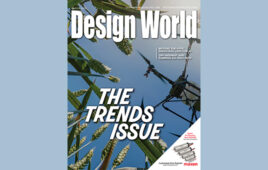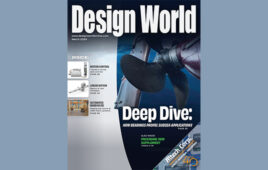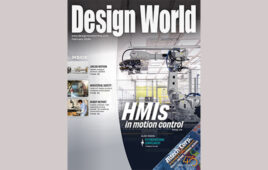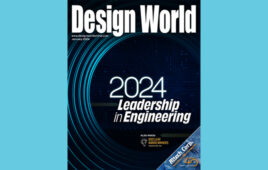In this issue:
18 Ballscrews
Better ballscrews, more applications
32 Cabling
Cables customized to specific applications
110 Wave Spring
Wave-spring uses abound in motion designs
Precision design: When it goes wrong and when it goes according to plan
By Lisa Eitel | @DW_LisaEitel • WELCOME to the second annual Motion System Casebook from Design World magazine — an inspiring collection of application stories from 2016 detailing real-world use of motion components in successful designs. We hope you enjoy reading it as much as we enjoyed assembling it, as this is one of our splashiest motion issues yet.

Much can go wrong in the build of motion machinery. Some problems find their origins in design proposals or a statement of work; others originate from subsequent selection of inappropriate motion components. It’s also common for engineers to play it safe and oversize electric motors, actuators, or even entire machines at the cost of higher initial purchase price and power consumption when the machine is up and running. A related pitfall is to base a machine’s new iteration on past design selections without reanalysis. Here, calculating required safety margin from scratch yields a design that’s smaller and more efficient than competitive offerings — though sometimes those analyses go undone or unheeded.
Read about designs that avoid such hazards from my colleague Miles Budimir (on Twitter at @DW_Motion) in his Casebook pieces on integrated motors and servomotors. One is a bottling machine that uses motors with integrated drives and fast control interpolation for smooth motion trajectories. Another is a packaging machine that uses a linear motor doing double-duty as a rotary direct drive for container filling and closing.
Other design problems relate to vibration — in the form of machine build compliance, unmitigated vibration, or a poor ratio of motor to load inertia that causes overshoot and ringing. Lower ratios drive resonant frequencies higher and vice versa, but sometimes the latter situations enter normal operating bandwidths and cause problems that no controls can tune out. Mary Gannon (@DW_MaryGannon) details systematic approaches to damping in her piece of shocks, and you’ll find additional examples of design features that address vibration in this year’s Casebook sections on controllers, encoders, and (from our own Mike Santora — @DW_MikeSantora) bearings as well.
We found that several of the most exotic applications from this year relate to the use of Cartesian and robot setups. Just consider how University of Wisconsin-Madison researchers are using an XYZ vertical gantry to take time-lapse movies of plant growth. The gantry moves cameras over a 1-m-by-1-m area with positioning resolution of 10 μm (and another linear axis to focus the cameras on the seedlings).
In my opinion, the most fascinating application stories are those in which engineers detail changes to fix critical design problems and prevent replays of failures — as in HMIs that reincorporate hard buttons for common functions as a way to avoid excessive touchscreen wear (see HMIs); actuators that replace mechanical linkages that forced users to muscle assemblies into position (see electric actuators); and the transition to PROFINET as a way to phase out defunct networking technology (see encoders). In the case of the packaging machine using linear motors capable of rotary actuation, previous versions were heavily mechanical and necessitated modifications to the motion sequence for each product changeover. Sometimes they also needed installation of different closure heads and cam discs. The new machine version doesn’t need all this changeover work, because the direct drive and electronic stroke curves deliver various outputs on the fly.
So check out the details on these applications and drop me a line about what inspiration you draw from them. We applaud the hard-won successes of these motion designs.
Filed Under: DIGITAL ISSUES • DESIGN WORLD





Tell Us What You Think!